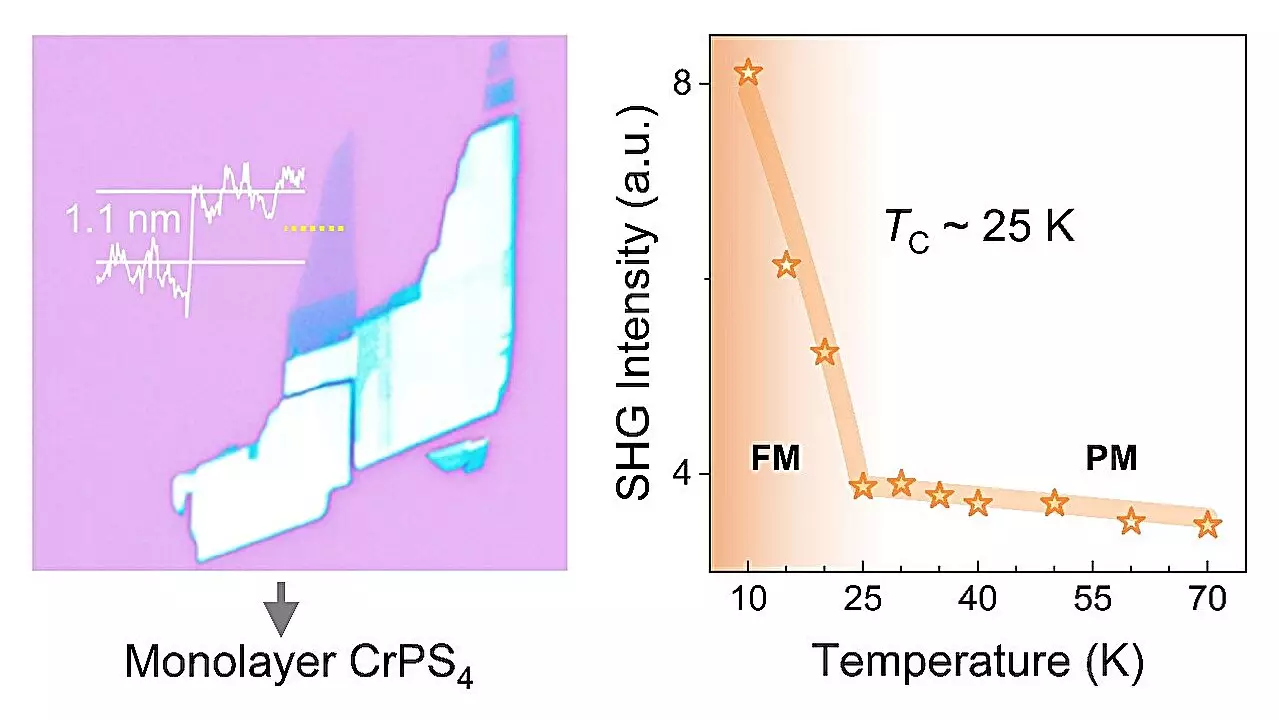In a groundbreaking study led by Professor Sheng Zhigao at the Hefei Institutes of Physical Science of the Chinese Academy of Sciences, researchers have achieved a significant milestone in the field of nonlinear optical effects. The team observed the strong nonlinear magnetic second harmonic generation (MSHG) induced by ferromagnetic order in monolayer CrPS4. This discovery has far-reaching implications for the development of optical devices and the understanding of the relationship between magnetic order and nonlinear optical properties.
Second harmonic generation (SHG) is a nonlinear optical effect that is sensitive to symmetry breaking in materials. Traditionally, SHG has been primarily observed in crystals with broken symmetry (i type). Magnetic systems (c type) also exhibit SHG, but to a much lesser extent. This inherent limitation has hindered the widespread application of SHG in optical devices. The emergence of two-dimensional van der Waals materials with unique properties has sparked interest in exploring their nonlinear optical properties, particularly the connection between SHG and magnetic order.
The research team’s in-depth investigation into the magnetic order-related SHG effects in the two-dimensional antiferromagnetic material CrPS4 yielded groundbreaking results. While bulk and even-layered CrPS4 did not exhibit c type SHG effects induced by antiferromagnetic order, the team discovered a significant c type SHG effect in odd-layered CrPS4 triggered by ferromagnetic order. This observation of ferromagnetic order-induced c type SHG effects in a 2D magnet, under the electric-dipole approximation, is unprecedented. The dual breaking of spatial and time inversion symmetries plays a crucial role in this phenomenon.
Perhaps the most remarkable finding of the study is the signal strength of the ferromagnetic order-induced c type SHG, which rivals that of i type SHG arising from the breaking of crystal structural symmetry. This parity between ferromagnetic-induced and crystal symmetry-induced SHG effects is exceedingly rare among known magnetic materials. The implications of this discovery extend beyond fundamental research, offering new possibilities for the design and implementation of optoelectronic devices.
The research led by Professor Sheng Zhigao has shed light on the intricate relationship between magnetic order and nonlinear optical properties in 2D materials. The observation of ferromagnetic order-induced c type SHG effects opens up exciting avenues for further exploration and applications in the field of optics and optoelectronics. This study marks a significant step towards harnessing the full potential of two-dimensional materials for future technological advancements.


Leave a Reply